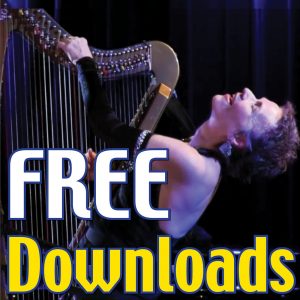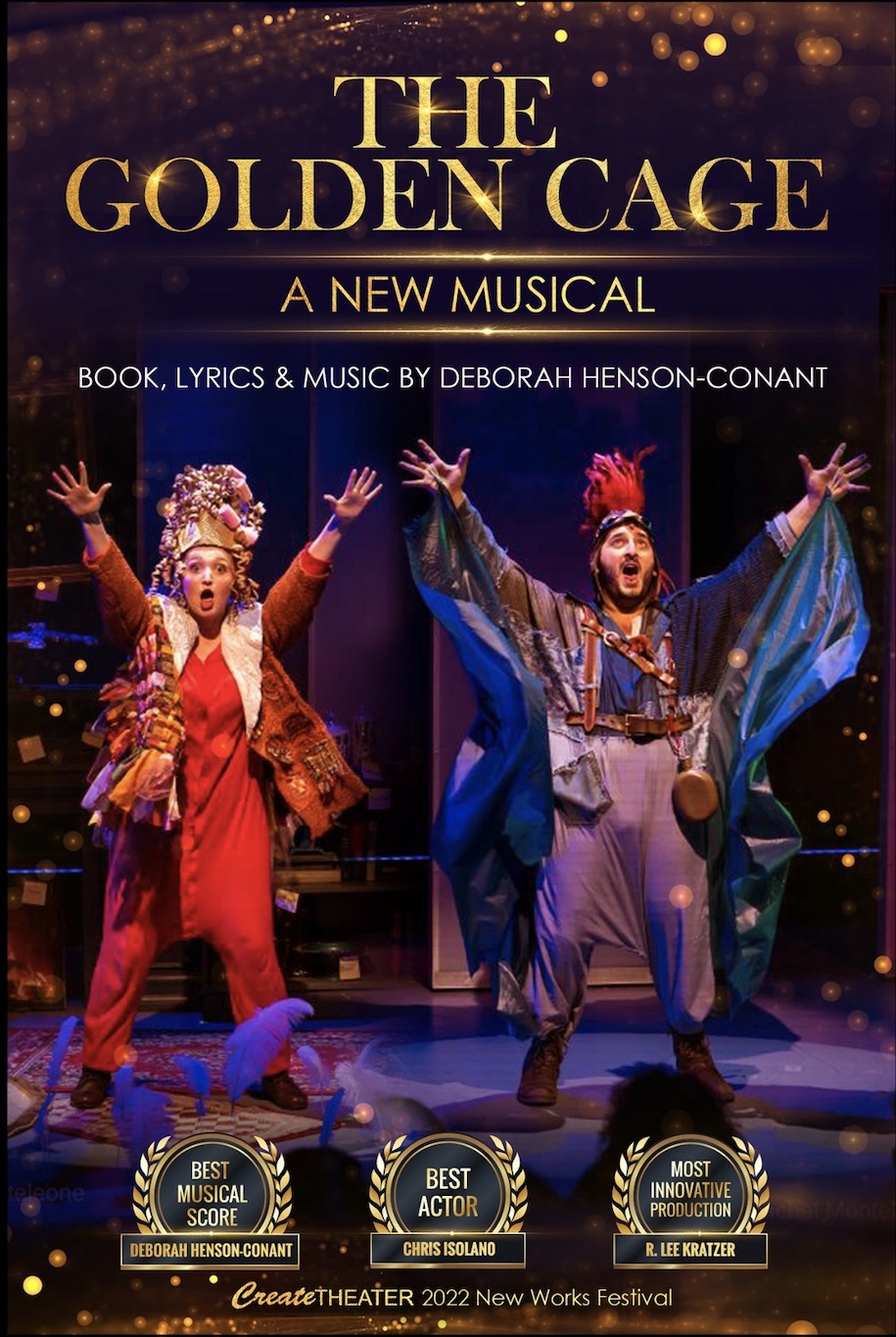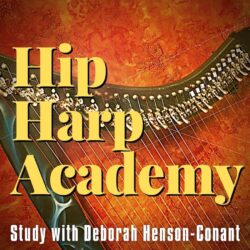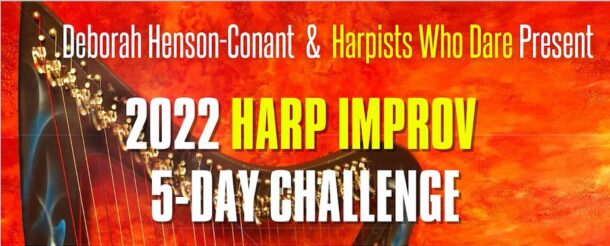
Welcome to Hip Harp Academy Member Spotlight Series: Pioneer Graduates of the Academy (Part 2 of 2)
This post is from a series that shares the Final-Begining Projects from one of my first Blues Harpstyle online courses. Students created short videos based on what they learned in the course, and answered 5 questions about what they got from the challenge of this project.
Scroll down to see the projects – but first, take a moment to think about the power of people sharing their creative PROCESS instead of a PERFECTED “PRESENTATION.” What you’ll learn from these videos – and the mini-interviews in which they share their process – will be far more inspiring to your creativity than someone sharing a trendy video with five gazillion hits. This is creative process – and in these shares, you get to glimpse into the process of other people like you and HOW they overcame their own blocks to accomplish their next creative goal.
The Hip Harp Academy Members’ Final Beginning Project
How to enjoy these wonderful video shares: Enjoy the creativity and the willingness to share. Think about the fact that each of these videos is a unique creation – none of these musicians are playing written sheet music – they’ve created these arrangements by learning the fundamentals of arrangement and improvisation and putting them into play – literally – in their own creations. And notice how different each video and each project is from the others … and yet they were all taking the exact same class.
This is the power of learning the tools of self-expression and creativity.
“Final-Beginning” is a term we use remind ourselves that these are not meant to be “Final” projects. If we worry about making them ‘FINAL’, we’d never share! Instead, we learn to embody a moment of completion as a new beginning: to acknowledge an accomplishment as something that opens up a new door, a new place to stand in, a new level of confidence – not the FINAL – it’s not the END … but the new BEGINNING.
So think about that as you watch them and read their own account of their personal creative journey in creating each video by clicking the toggle beneath each video – and I encourage you to do that if you really want to be inspired.
Some of the players have played for years, and even decades – some have come to the harp as adults – some even as a retirement gift for themselves. We’re a community connected by a commitment to creative expression. Every week we meet for masterclasses and training, and during the week we practice the new ideas and the willingness to be vulnerable, authentic and self-expressed with our instruments, our voices and ourSELVES.
So be inspired by that commitment, let it infuse your own life – and if you play the harp, come join us at Hip Harp Academy.
Do YOU play the harp? Want to learn to play BLUES?
Blues is just one of the musical structures we’ll look at this quarter in “Power of Pattern.” Learn more about Hip Harp Academy and how it can give you the classes, coaching, and community to support you in breaking free from the notes on the page.
Annelies Kole:
Freedom for me was: knowing that a few notes could be enough for playing nice riffs and improvisations.
.
Annelies' Insights about this Project
Give a short description of what it took for you to be able to play what you did – both logistically and emotionally.
I had to practice a lot to feel the grove and to feel the 4 beats in a measure when I was improvising. But with the different lessons, I practiced almost every day half an hour.
My daughter is also very busy and didn’t want to practice as much as I did. But that was right for me.
The lessons of ‘do what you can’ and ‘imperfect completion’ were also important lessons for me in how I treat my own daughters when making music.
And I knew having fun was the most important emotion we had to show on our video.
What freedoms and blocks within yourself did you connect with (or struggle with) in the process?
Freedom for me was: knowing that a few notes could be enough for playing nice riffs and improvisations. The groove is the most important thing that has to go on. That gave me the idea that I couldn’t make mistakes and I enjoyed playing the blues so much.
My block was: my music has to be interesting, I have to be interesting. But soon I learned that it’s not important for making beautiful or nice music. And that was another freedom the course gave me.
What challenges did you meet while connecting with your own freedom of expression in this project?
My big challenge is to stay in the 4 beats of each measure when I play little with my left hand. Still when I play with my metronome, so I can notice that I do, I lose one beat and mostly I play more beats and I’m to late for beat one of the next measure. I practiced a lot with this. But it didn’t help yet. Only when I count out loud the whole time. And when I sing, then I got the good feeling for those four beats. For my final I didn’t want to challenge this and I played in every measure a note with my left hand. That’s why I don’t play notes with my left hand in the melody. And I counted in my head (not all the time).
What were your personal “Ahas”?
My personal Aha is that everybody can join in and play the blues. You only have to give them a few and clear possibilities they can use. That’s so great. And I really want to play the blues with other people.
Is there anything else you´d like to tell people who are watching your video?
I love my daughter for wanting to sing the blues with me. It’ not a teenage style of music. And I want to thank her for her patience when I was losing the 4 beats and she just started one count later, although I know she had heard it, because she is good in this. She can feel the timing.
Kathy King:
First off, a huge THANK YOU to DHC, for being such a wonderful, thorough, enthusiastic teacher. Every time I take a course from her, I learn amazing amounts of musical information in such a short time. She truly does everything she can to help us succeed.
.
Kathy's Insights about this Project
Give a short description of what it took for you to be able to play what you did – both logistically and emotionally.
Well, I am still a relatively new harpist, so I knew from the beginning that there would be some disconnects between what I imagined doing vs. what my fingers and brain were actually capable of. I had to figure out logistically how to have some fun with this, and learn to do at least a few new things. Emotionally, it is difficult for me to put a project out there that I know is not perfect. So, once again it is a case of embracing “imperfect completion.”
What freedoms and blocks within yourself did you connect with (or struggle with) in the process?
I thought that the most difficult thing would be finding a project. However, this turned out to be easy. I had a dress from a Renaissance-themed Murder Mystery Party. Just after starting the Blues course, I walked past the dress, and the idea of a story-song about a “reluctant” Fairy Tale Princess just jumped almost fully formed into my head. So the most difficult part of this project was actually the easiest. The block for me was when I realized that I had created something not quite “true” to the Blues style. I really couldn’t hear the song any other way. DHC was, as always, super supportive about just letting the song be what it is. Let it be!
What challenges did you meet while connecting with your own freedom of expression in this project?
I wanted the words to rhyme, and of course, fit with the timing/rhythm of the piece. That was my first challenge. I was actually shocked at how much fun that was! At the Half-Baked, DHC suggested I add stylistic contrast with my voice. It was a bigger challenge than I expected, trying to contrast the proper-soprano style singing with a gutsier Blues-y style voice. I’m still working on that!
What were your personal “Ahas”?
My biggest “Aha” was realizing that, rightly or wrongly, the song had taken on a life of its own, and some of my original ideas were not going to fit. I really wanted to bend a few notes and add some riffs, and that just wasn’t going to happen within the context of this piece. It took me some time to make peace with the fact that this wasn’t going to be the right time for me to focus on new harp skills.. Just sing the song…
Is there anything else you´d like to tell people who are watching your video?
I discovered that you (or a helper) have to watch the lighting in the video. As I worked on getting a decent recording, the day lengthened and the room became darker. My best recordings, sadly, were the darker/grainer ones. Lessons learned.
Jade Barnaby:
Just playing around helped me connect to the fun side of my brain, enabled more creativity and I believe a better piece of music.
.
Jade's Insights about this Project
Give a short description of what it took for you to be able to play what you did – both logistically and emotionally.
Emotionally, attempting and having confidence to create my own piece of work and not read music note-for-note was excruciatingly hard. Logistically organising to play with another musician in a relatively short period of time was also very difficult. The week we recorded it had been stifling hot – it had been 36 C or 97 Fahrenheit all week! It was humid and we were trying to sneak down to the Storage Room during work, between meetings, to record. Kirsten had to run to catch the train after our last attempt!
In some ways the Storage Room was the perfect place as it was secure and offered us a lot of privacy to practice safely without disruptions and distractions, I highly recommend it! But in other ways it wasn’t an ideal environment and timing. In the end both emotionally and logistically, I just had to let it go and accept that I wouldn’t in the first instance create exactly what I had in envisioned in my mind… and that’s okay, and in the end some things I actually liked better than what I had in mind.
What freedoms and blocks within yourself did you connect with (or struggle with) in the process?
The blocks were starting and resigning that I had to do something more simply first. Having structural limitations, such as the actual structure of the 12 bars became a freedom as it helped me focus on what I could do within that space, versus having the perceived freedom to do everything, which does the opposite to me-blockage.
What challenges did you meet while connecting with your own freedom of expression in this project?
In the past I have struggled with ‘the harp’s’ identity and my personal artistic direction as I would love to play the harp in a style that relates more to the average person, not the stereotypical, angelic harp in an orchestra, rather music that is accessible and fun! Going through this project process helped me to realise that I can create this sort of music on the harp. Realising that a piece doesn’t have to be perfect or completely prescribed note-for-note on the page was a challenging to accept but once I did the process became easier.
What were your personal “Ahas”?
A) Just playing around helped me connect to the fun side of my brain, enabled more creativity and I believe a better piece of music.
B) Also, realising I could play with another musician when the piece or I was not 100% ready or perfect is not only fine but actually a good thing. Kirsten’s suggestions were so helpful and added much more to the piece than I could have created on my own. It was much more fun to go through the process of creating something with another person than me on my own, tearing my hair out! It was certainly encouraging to actually perform or play with other musicians even before I felt ready. This also lead to me realising that:
C) It confirmed that sometimes you should just act and do things before you feel ready… as you may never feel 100% prepared when you actually already do have the capabilities to do those things you’ve been thinking about doing for so long.
Is there anything else you´d like to tell people who are watching your video?
There are elements of the half-baked submission I liked more than my ‘final’ but that’s fine. This final project helped me achieve my main objective of this course, that was to feel greater confidence to play the Blues (and other forms of music) with other musicians I wanted to allow myself the freedom to go with the flow and play with others and not beat myself up because what I’m playing doesn’t sound perfect or polished.
Do YOU play the harp? Want to learn to play BLUES?
Blues is just one of the musical structures we’ll look at this quarter in “Power of Pattern.” Learn more about Hip Harp Academy and how it can give you the classes, coaching, and community to support you in breaking free from the notes on the page.
Charlene Elderkin:
I’ve gotten more relaxed about making these videos, less worried about perfection.
.
Charlene's Insights about this Project
Give a short description of what it took for you to be able to play what you did – both logistically and emotionally.
I’m grateful for snow in Boston, because I needed the extra week to get this together. I kept simplifying the blues arrangement, as coordinating all the different aspects – the lyrics, the slap bass with the vocals, etc. was a little beyond me.
I’ve gotten more relaxed about making these videos, less worried about perfection, but I did want the video to fairly represent where I’m at. I was able to find a spot in the house less cluttered and more visually appealing, and my staff tee shirt became my costume. I didn’t do a half baked because I didn’t have the lyrics together, but in retrospect I wish I would have, because once I sat down with my partially completed lyrics and played, the rest started coming.
What freedoms and blocks within yourself did you connect with (or struggle with) in the process?
The lyrics were my biggest hang up. I knew that I would have to get the words in order to do the song, and without them I was only half-baked in my practice. Once I started working with the lyrics, it was hard getting the slap bass in the right place, which surprised me. I tried many times to put a non-rhythmical intro to it, but then I couldn’t seem to come in on the downbeat with the slap bass and the lyrics. So I cut the intro, went with a chord and a short vamp so I could get the groove. I also had trouble keeping an even, slow tempo. The walking bass kept running away with me!The lyrics were my biggest hang up. I knew that I would have to get the words in order to do the song, and without them I was only half-baked in my practice. Once I started working with the lyrics, it was hard getting the slap bass in the right place, which surprised me. I tried many times to put a non-rhythmical intro to it, but then I couldn’t seem to come in on the downbeat with the slap bass and the lyrics. So I cut the intro, went with a chord and a short vamp so I could get the groove. I also had trouble keeping an even, slow tempo. The walking bass kept running away with me!
What challenges did you meet while connecting with your own freedom of expression in this project?
I really like to be expressive in my singing, to embody a song, but I’m not competent enough on the harp to do both – yet. The D key was a little high for my voice, but not impossible. I’ll have to learn the C blues and work with that. I have ideas for a whole lot of verses for this song, it’s meant to be funny, and I’d like to collaborate with my fellow employees to really let this song “whine.”
What were your personal “Ahas”?
So many! A big one for me is that as a harpist, I have a lot of versatility when it comes to playing with other instruments. I may not be able to coordinate all the aspects, but I could handle one of the roles (bass, comping, melody) at a time and it would be great fun. I love having all the reference material for blues in other keys, and knowing the basic structure now, I can pick it out when I hear a song. I’ll be doing more play-alongs with recorded music just for the fun of it.
What other parts of your life were impacted by what you learned in this class, and how?
I’d like to thank everyone who shared videos, because I learned so much from watching them. Deborah has given us so much content in a short while, and I can feel intimidated as I haven’t been playing that long. But the way each of you were willing to post your imperfect completions and ask questions, get Deborah’s feedback, really brought the material home for me. I could also experience a much wider interpretation, seeing how each person interprets the blues in their own unique way.
Cath Connelly:
As a die-hard Celtic harper, I wanted to take the Celtic genre and shake it up. I guess I wanted to parody my own passion for Celtic music. The idea of the shadow behind the harp was to be the shadow side of myself that was wanting to break free of folk music.
.
Cath's Insights about this Project
Give a short description of what it took for you to be able to play what you did – both logistically and emotionally.
I had to really trust that somewhere within me I had the music that I needed to find. For about a week I went to bed hoping that my dreams might tap into this creative space – and they did! Two mornings I woke up with snatches of phrases waiting for exploration. This is part of the trusting myself part – I had no idea what the final project would be like, but I had these two snatches so I went with them.
What freedoms and blocks within yourself did you connect with (or struggle with) in the process?
Blocks were about not really having had enough time to develop the riffs of the blues so I needed to find a way to use minimal riffs and yet still sound bluesy. Freedoms – it was so fun to immerse myself in this project
What challenges did you meet while connecting with your own freedom of expression in this project?
I never had blues music as a child. It was all classical at home. I discovered this tapped into feelings of inadequacy about just what the blues sounds like. Is my project really blues? Do I have the right vibe? Would anyone else recognise it as blues?
What were your personal “Ahas”?
This is fun! Right outside comfort zone and yet that is the very reason I took this course. My ‘aha’ is to just enjoy the experience and not try to come up with the all-perfect finished project. Just to go with the feel and fun.
Is there anything else you´d like to tell people who are watching your video?
Deborah is an extraordinarily gifted teacher. Deep thanks…
Nicole Müller:
The freedom was that I didn´t have to worry about “right or wrong”. That is really liberating for a classical harpist like me.
.
Nicole's Insights about this Project
Give a short description of what it took for you to be able to play what you did – both logistically and emotionally.
I need a lot of time to play around with the given form and structure, before I start to develop my own “thing”. In the end, I have to accept that the piece could always be better and more fluent but that I need a version RIGHT NOW.
What freedoms and blocks within yourself did you connect with (or struggle with) in the process?
The freedom was that I didn´t have to worry about “right or wrong”. That is really liberating for a classical harpist like me. The block is – well, – that I´m so unsure and insecure about whether the notes sound “right or wrong”…
What challenges did you meet while connecting with your own freedom of expression in this project?
At first I found it hard to combine the given structure and patterns with the improvisational/creative parts. But once I got used to it, it actually was a lot of fun.
What were your personal “Ahas”?
That I don´t create stuff without rules and a deadline!
Is there anything else you´d like to tell people who are watching your video?
This was just an imperfect something, but it definitely was a lot of fun!
It has been a pleasure to share this wonderful course with all of you guys and I hope that we see each other in DHC`s next class!
Harpists Who Dare!
Are you ready to free yourself from the notes on the page?

PROJECTS & PERFORMANCES:
FOR HARPISTS:
- Join Hip Harp Academy
- Harp Time Live (FREE Weekly Playalong)
- FREE Resources





Join for Freebies, Stories & News
Join to get weekly-ish emails with stories, videos & events like concerts & classes
Yay! You should get my next newsletter within the next 7-10 days. I'm so happy we'll be in touch!
I won't ever share your email address with others - and you can unsubscribe anytime, tho most people say they really enjoy these weeklish emails.